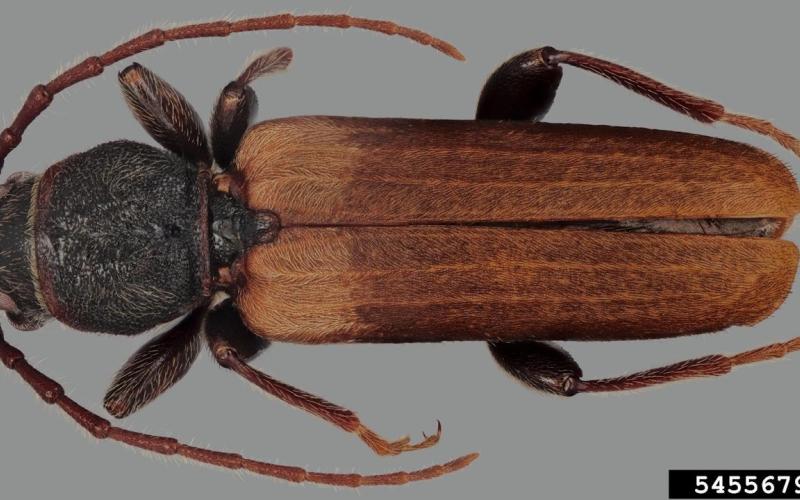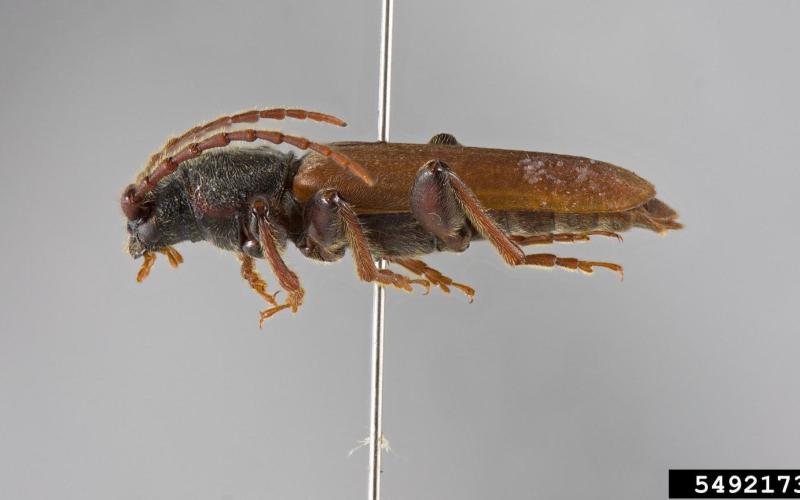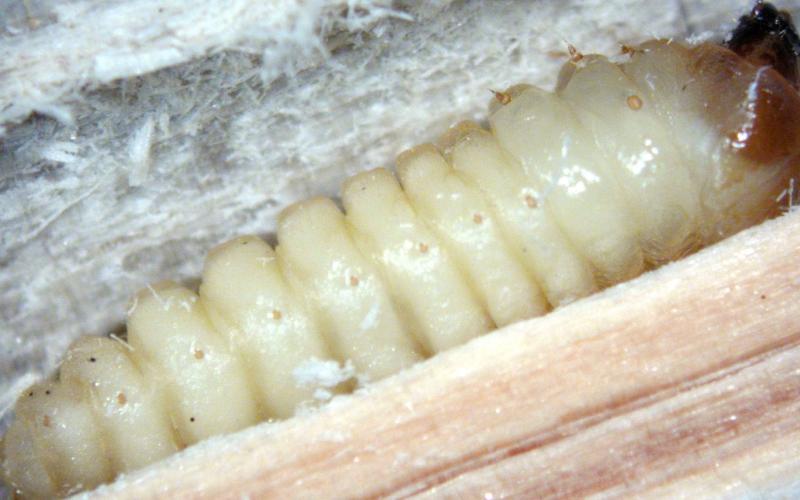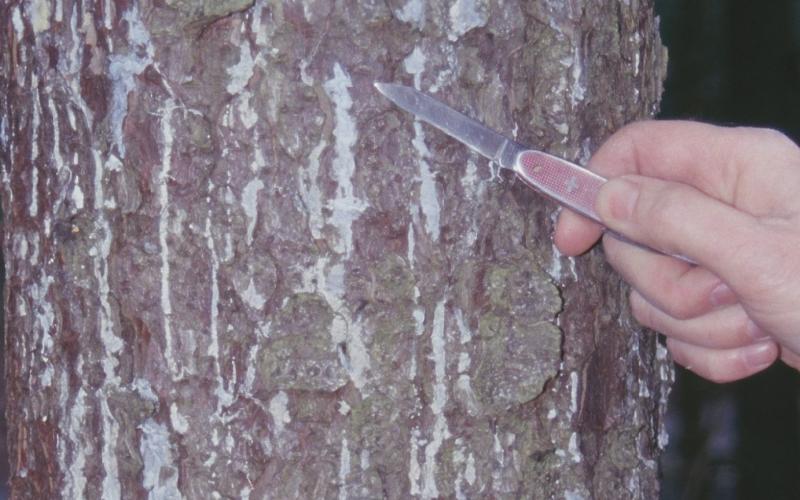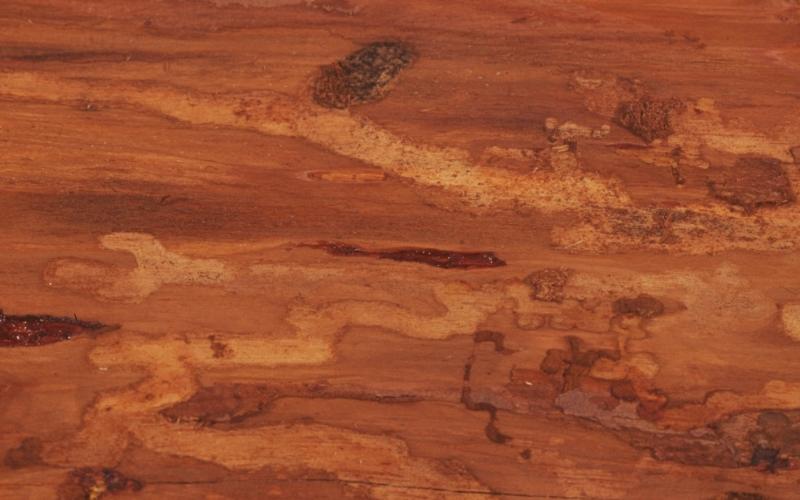Scientific name: Tetropium fuscum Fabricius
Native range: Europe and Asia
At Risk
Brown spruce longhorned beetle (BSLB) invaded Halifax, Nova Scotia, Canada with earliest records dating back to 1990. Untreated wood and wood products are likely pathways for human-assisted spread of this pest. The insect feeds primarily on spruce (Picea spp.), but can also attack firs (Aibes spp.), pines (Pinus spp.), and larches (Larix spp.). In the native European and Asian range, it is considered a secondary pest, attacking only stressed trees. However, in North America, it is attacking apparently healthy trees. Damage is a result of larval tunneling. It has also been associated with a new wood stain fungus, Ophiostoma tetropii, in North America.
This pest is not known to occur in Minnesota
Biology
Adults are 1 to 1.5 cm long with a somewhat flattened body. The head and pronotum are black, with elytra being tan, brown or reddish. The reddish-brown antennae are about half the body length and the legs are dark brown. Larvae, which tunnel in wood, are yellowish-white, somewhat flattened, and range from 14 to 28 mm long. In Canada, where one generation occurs per year, adults are active from June to August. Females lay eggs in bark. After hatching, larvae tunnel underneath bark. As larvae mature, they tunnel inward toward the heartwood to pupate. Larvae are the overwintering stage.
Symptoms of attack
- Resin on bark
- Oval or round adult exit holes (4 mm in diameter)
- Frass-filled galleries underneath bark (up to 6 mm diameter)
- L-shaped galleries penetrating xylem (seen in spring when pupation occurs)
Contact the MDA via Report a Pest if you suspect an infestation of brown spruce longhorned beetle in Minnesota.
Smarty Plants Podcast
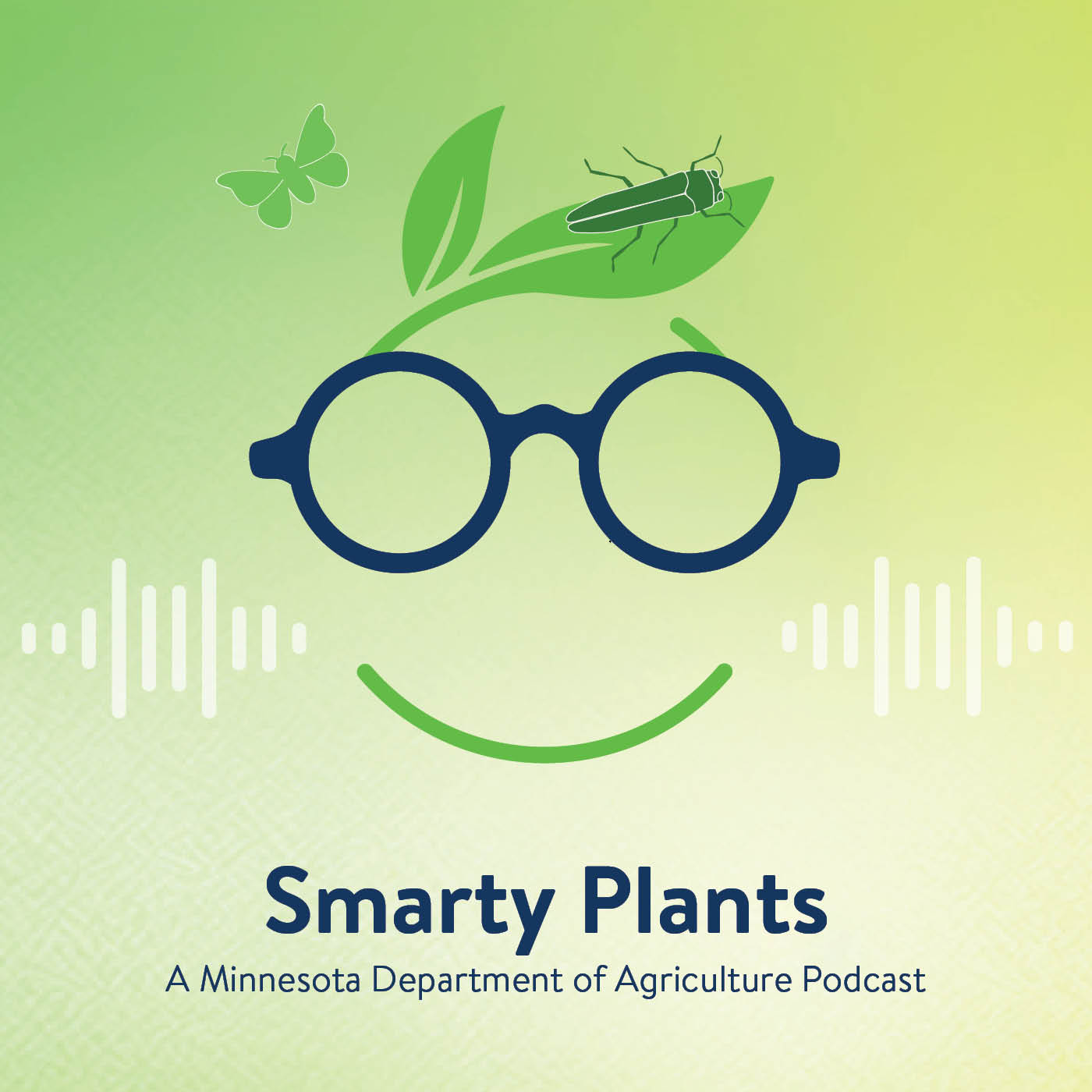 Discover Smarty Plants, the Minnesota Department of Agriculture's podcast that digs into the fascinating world of invasive species. Join expert guests as they share insights and solutions to protect our environment and agricultural resources. Visit Smarty Plants and start listening today.
Discover Smarty Plants, the Minnesota Department of Agriculture's podcast that digs into the fascinating world of invasive species. Join expert guests as they share insights and solutions to protect our environment and agricultural resources. Visit Smarty Plants and start listening today.
